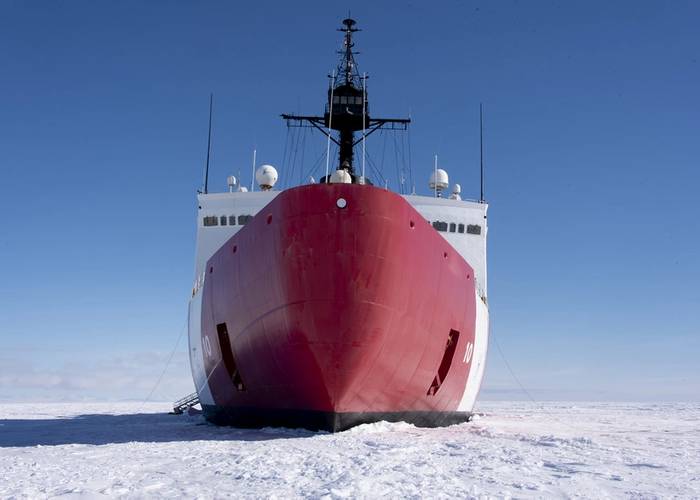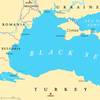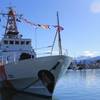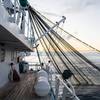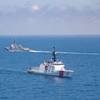Coast Guard Arctic Planning, Operational Challenges Persist, says GAO
The effects of climate change, technological advancements, and economic opportunities have created competition between the United States and its strategic adversaries in the Arctic region. Both Russia and China have developed Arctic strategies with geopolitical goals contrary to U.S. interests, including the control of resources and sea routes. In recent months, the U.S. Navy and U.S. Coast Guard have encountered Russian and Chinese naval vessels near Alaska.
The U.S. Government Accountability Office (GAO) has recently published several reports assessing the federal government’s management of Arctic efforts. These reports found that the Coast Guard has taken steps to protect U.S. interests in the region, including developing strategies and coordinating across agencies. However, Coast Guard operational challenges remain, such as a lack of assets in the region and incomplete information to measure the effectiveness of federal efforts.
- Planning Efforts
The Coast Guard and the federal government have taken steps to plan and coordinate for a changing Arctic region. Further, the federal government published its most recent Arctic strategy in October 2022 and an implementation plan in October 2023. Together, these serve as a framework for guiding its approach to addressing emerging challenges and opportunities in the Arctic.
GAO reported in August 2024 that the Coast Guard has also made progress to identify and assess risks—such as those resulting from climate change and increased maritime activity—that affect its ability to carry out its missions in the Arctic region. This information in included in the Coast Guard’s strategy and implementation plan, however this plan lacks key components that are essential to promote its effectiveness, such as performance measures, targets, and time frames for the action items it identifies. These elements could help the Coast Guard more effectively plan for its near- and longer-term priorities and would help ensure that its strategic objectives remain aligned with the national Arctic efforts.
- Coordination Efforts
The federal government has initiated multiple efforts to coordinate on Arctic issues. For example, GAO reported in September 2023 that Arctic stakeholders—including federal agencies and foreign governments—identified White House-led coordination groups as useful tools to support information sharing and Arctic strategy efforts. However, some stakeholders said that the federal government faces various challenges related to interagency coordination that hinder implementation of U.S. Arctic priorities outlined in the 2022 strategy. All seven experts GAO spoke with said the United States lacks an effective interagency coordination mechanism for its Arctic efforts.
Federal agencies also coordinate directly with each other. In August 2024, GAO reported that Coast Guard and Department of Defense (DOD) collaborated in the Arctic to assess and manage risks in several ways, including sharing relevant information and expertise and providing operational assistance. For example, both agencies collaborated on the development of their Arctic strategies to improve domain awareness. The Coast Guard also provides standby search and rescue support for DOD joint exercises with the Canadian Armed Forces and participates in the Alaska National Guard’s recurring exercise to train for homeland security and emergency response missions. Moreover, the Coast Guard’s Defense Readiness mission requires it to maintain the training and capability needed to integrate with DOD forces and coordinate as needed with U.S. Northern Command, which has responsibility for homeland defense efforts in the Arctic region.
- Coast Guard Operations
The Coast Guard has established strategic commitments for maintaining an operational presence in the Arctic by deploying personnel, ships, and aircraft to help mitigate risks in the region. To help meet these commitments and better manage its operations, the Coast Guard forward deploys assets to key locations in the U.S. Arctic region from other locations—such as California, Hawaii, Washington, and elsewhere in Alaska. This forward deployment reduces transit times for carrying out its missions in the summer and fall when maritime activity peaks in the region.
However, in recent years the Coast Guard has been unable to meet all its strategic commitments for the Arctic region. This has primarily been due to ship availability challenges resulting from, for example, competing demands for the Coast Guard to be present in the Indo-Pacific region and fires on the polar icebreaker Healy in 2020 and 2024, which shortened its planned deployment days.
GAO’s August 2024 report found that the Coast Guard hasn't fully tracked the time spent on its Arctic activities when resources were deployed. Collecting and reporting complete information would better position it to make more informed operational planning decisions for the region, better allocate its constrained resources, and assess its progress toward achieving its Arctic strategic goals.
To address operational challenges in the Arctic and other regions, the Coast Guard plans to acquire 28 new cutters, including at least three new icebreakers. But in the interim, it has projected an operational gap through 2039. Until these new ships enter service, cutter and icebreaker shortages may continue to challenge the Coast Guard’s ability to meet its Arctic commitments. Further, acquisition of these three icebreakers is years behind schedule and up to $2 billion over the initial cost estimate, as reported by GAO in June 2024. Meanwhile, Russia has more than 40 icebreakers, and China—which is not an Arctic nation—has three.
Coast Guard operational challenges in the U.S. Arctic region are amplified by limited infrastructure and logistics capabilities in Alaska. For example, the Coast Guard operates its forward deployed helicopters from a leased Alaska National Guard aircraft hangar in Kotzebue, Alaska because the service lacks its own infrastructure.
The infrastructure that the Coast Guard does have is aging and sometimes in a state of disrepair. In February 2019, GAO found that the Coast Guard faced a costly backlog of shore infrastructure projects related to docks, air stations, and other infrastructure from which missions such as ice breaking and defense readiness begin and end. This backlog totaled at least $2.6 billion at that time.
The Coast Guard has a key role within the federal government in Arctic policy implementation and enforcement. It is facing growing responsibilities to assess and manage risks to maritime safety and security and national security as regional conditions continue to change. However, there are several concerns with the service’s Arctic planning and operations. GAO has made a number of recommendations in its reports, including improving its planning, acquisition, and data collection efforts. Implementing these recommendations is critical to protecting U.S. interests in the Arctic.





